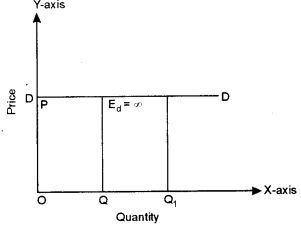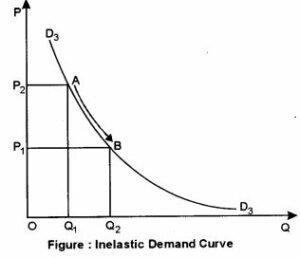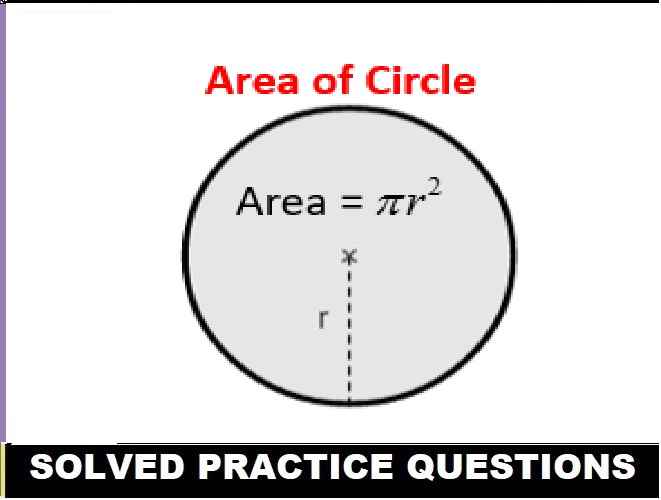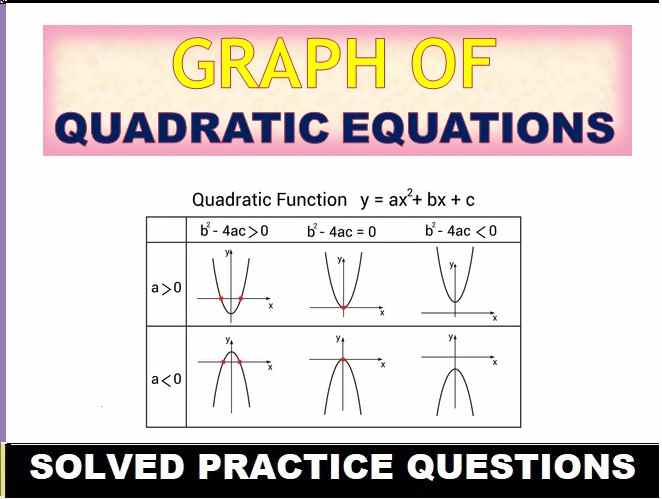ICSE Economics 2018 Paper Solved Class-10 Previous Year Questions for practice so that student of class 10th ICSE can achieve their goals in next exam of council. . Hence by better practice of Solved Question Paper of Previous Year including 2018 is very helpful for ICSE student.
By the practice of ICSE Economics Paper Previous Year you can get the idea of solving. Try Also other year for practice. Visit official website CISCE for detail information about ICSE Board Class-10.
Answers to this Paper must he written on the paper provided separately.
- You will not be allowed to write during the first 15 minutes.
- This time is to he spent in reading the question paper.
- The time given at the head of this Paper is the time allowed for writing the answers.
- Section I is compulsory. Attempt any four questions from Section II.
- The intended marks for questions or parts of questions are given in brackets [ ].
Previous Year Questions ICSE Economics 2018 Paper Solved Class-10
Section – A [40 Marks]
(Attempt all questions from this Section)
Question 1 :-
(a) Give two reasons as to why the division of labour is an advantage to the producer ? [2]
(b) Define the term consumer awareness. [2]
(c) Why do small farmers suffer during inflation ? [2]
(d) Which are the two sources of public revenue ? [2]
(e) Define the term labour as a factor of production. [2]
Answer 1 :-
(a)
(i) It leads to specialisation, which increases productivity.
(ii) It improves quality of the product.
(b)
Consumer awareness means awareness of consumer in different aspects of consumption activities. A consumer should be aware about his rights, duties, price of the product or service, quality, expiry date, harmful effects etc.
(c)
(i) Inflation increases prices of input.
(ii) Price they receive for their output do not increase at the same pace.
(d)
(i) Taxes
(ii) Public borrowings
(e)
It is described as any human work which is performed with the help of mind or physique with a view to earn income.
Question 2 :- (ICSE Economics 2018 Paper)
(a) Explain any one factor that affects the supply of a commodity. [2]
(b) What do you understand by the term ‘near money’? [2]
(c) A list of goods are given below. [2]
State whether it is fixed capital or circulating capital.
(i) Machines
(ii) Raw material
(iii) Fuel . K
(iv) Office furniture
(d) With the help of an example explain the term productive debt. [2]
(e) Explain any two characteristics of capital. [2]
Answer 2 :-
(a) Price of factor input :
Price of the factors of production forms a major part of the cost of producing a commodity. With a change (increase or decrease) in the amount payable to factor inputs, supply curve of the commodity also changes. .
(i) Increase in price of factors of production: Rise in price of factors of production increases the cost of production and reduces the profit margin. As a result, supply falls from OQ to OQi at the same price OP. It leads to a leftward shift in the supply curve from SS to S1S1.

Decrease in price of factors of production: When price of factors of production falls, cost of production falls and profit margin rises. It increases the supply from OQ to OQ i at the same price OP. It leads to a rightward shift in the supply curve from SS to S1S1

Question 3 :-
(a) How is land different from labour ? [2]
(b) Draw a diagram showing a perfectly elastic demand curve. [2]
(c) With help of an example explain the term complementary goods. [2]
(d) Name any two sources of external debt for India. [2]
(e) Differentiate between creeping and running inflation. [2]
Answer 3 :-
(a)
(i) Land is a passive factor of production whereas labour is active factor of production.
(ii) Land is fixed whereas labour is a variable factor of production.
(b)

(c) Complementary Goods
- These goods are those which are jointly used to satisfy a want. For example, Car and Petrol.
- The demand for complementary goods is joint demand.
- The demand for a commodity varies indirectly (inversely) with the price of its complementary goods.
- The demand curve for a commodity shifts to the left (right) with the rise (fall) in the price of complementary goods.
(d)
(i) Borrowings from international institutions like World Bank.
(ii) Borrowings from other foreign countries like USA, Japan etc.
(e) Creeping Inflation : When the rise in prices is very slow (less than 3% per annum) like that of a snail or creeper, it is called creeping inflation. Such an increase in prices is regarded safe and essential for economic growth.
Running Inflation : When prices rise rapidly like the running of a horse at a rate of speed of 10% – measures, otherwise it leads to hyperinflation.
Question 4 :- (ICSE Economics 2018 Paper)
(a) Mention two ways by which efficiency of labour can be improved. [2]
(b) What does the term ‘nationalisation of banks’ mean ? [2]
(c) Why is India considered to be in a virtual debt trap ? [2]
(d) Give any two reasons for giving the monopoly right of note issue to the Central Bank. [2]
(e) Mention any two duties of a consumer. [2]
Answer 4 :-
(a)
(i) Training
(ii) By using technology
(b) Nationalisation is a process whereby a national government or state takes over the private sector. Government of India decided to nationalise 14 major commercial banks in 1969.
(c) Virtual debt trap is a situation under which a borrower is led into a cycle of re-borrowing, or rolling over, their loan payments because they are unable to afford the schedule payments on the principal of loan.
(d)
(i) This brings uniformity to the monetary system.
(ii) The currency issued by the Central Bank is its monetary liability. It ensures public faith in the currency system.
(e)
(i) He/She should be aware of his rights.
(ii) He/She should be aware of his duties.
Previous Year Questions ICSE Economics 2018 Paper Solved Class-10
Section – B [40 Marks]
(Attempt any four from this Section)
Question 5 :-
(a) Give any five differences between product and process based division of labour. [5]
(b) Explain any five rights of the consumers as accepted by the Indian law. [5]
Answer 5 :-
(a) Product based division of labour :
If a worker specializes in the production of a single good or service, it is called product based division of labour. In case of small farmers, a potter, a cobbler or a carpenter in a village we see that there is the use of product based division of labour. It is very common in household enterprises of developing countries like India.
When the production is made for self consumption or on a small scale there is the use of product based division of labour. For example, most of the farmers in our country make production of food grains mainly for self consumption. All of them make use of product based division of labour.
Process based division of labour :
In big production units like corporations and government enterprises where the production is made on a very large scale, there is the use of process based division of labour. In case of process based division of labour, the production of a commodity is divided into many processes and a worker specializes in one or two processes, that is called process based division of labour. For example, Britannia Bread Company manufactures bread. Raw material for bread is wheat flour. Conversion of wheat flour into bread requires three or four processes.
The flour has to be converted into dough and dough has to be kept into containers for baking. Containers are kept in ovens for baking. The baked bread is cut into appropriate size and packed. All processes required in manufacturing of bread are under U kcn by different workers and nobody can claim mat he has manufactured the bread. He can say that he has performed one or two processes in the preparation of the bread.
(b)
(i) Right to safety : The consumers have the right to be protected against marketing of goods
and services which are hazardous to life and property.
(ii) Right to be informed : The consumers have the right to know about the quality, quantity and price of goods and services, batch number, date of manufacture, expiry date, and the address of the manufacturer. This right has been provided to the consumer so that consumer can approach the courts if cheated. In recent times, the Right to Information has been expanded through Right to Information Act.
In October 2005, the Government of India enacted a law, popularly known as RTI Act, which ensures the citizens all the information about the functioning of government departments.
(iii) Right to choose : Consumers have the right to assess the variety of goods and services at competitive price. In case of a single supplier, the consumers have the right of be assured of satisfactory quality and service at a fair price. This right gives the consumer a surety that no producer can force him/her to purchase a particular brand or product.
(iv) Right to seek redressal : This is the most important right. The consumer has the right to seek redressal against unfair trade practices and exploitation. If any damage has been done to the consumer, he/she has the right to get compensation depending upon degree of damage. You might be interested to know how an aggrieved person gets his/her compensation.
(v) Right to be heard : Means consumer’s interest will receive due consideration at appropriate forums. It also include right to represent in various forums.
Question 6 :- (ICSE Economics 2018 Paper)
(a) How do the manufacturers and traders exploit the consumers ? [5]
(b) Explain the role of an entrepreneur in the economic development of the country. [5]
Answer 6 :-
(a) Consumers are cheated by the manufacturers and the traders commonly by the following ways :
- High prices : There can be some articles in the market without MRP (Market Retail Price). In this case, the traders can charge a price higher than the price prevailing in the market because of the ignorance and urgency of the customer.
- Underweight and under-measurement : By their cleverness, some traders stoop so low that they cheat the customers by resorting to underweight and under-measurement tactics.
- Substandard quality : Some traders or sellers sell substandard quality products to the consumer. Now-a-days markets are full of duplicate products.
- Adulterated and impure products : In edible items such as oil, ghee and spices adulteration is made in order to earn higher profits. This causes financial and health loss to the consumer. You may have heard people dying because of adulterated wine.
- Improper information : Companies spend a considerable amount on advertisements alone to attract consumers and feed information that they want the consumers to know but not the information the consumers need about the products.
- Lack of safety devices : In order to increase the sale of their products, some producers, especially of electrical goods, electronic devices and such other appliances, try to produce things of poor quality without following safety measures.
(b)
1. Development of managerial capabilities : The biggest significance of entrepreneurship lies in the fact that it helps in identifying and developing managerial capabilities of entrepreneurs. An entrepreneur studies a problem, identifies its alternatives, compares the alternatives in terms of cost and benefits implications, and finally chooses the best alternative.
This exercise helps in sharpening the decision making skills of an entrepreneur. Besides, these managerial capabilities are used by entrepreneurs in creating new technologies and products in place of older technologies and products resulting in higher performance.
2. Creation of organisations : Entrepreneurship results into creation of organisations when entrepreneurs assemble and coordinate physical, human and financial resources and direct them towards achievement of objectives through managerial skills.
3. Improving standards of living : By creating productive organisations, entrepreneurship helps in making a wide variety of goods and services available to the society which results into higher standards of living for the people. Possession of luxury cars, computers, mobile phones, rapid growth of shopping malls, etc. are pointers to the rising living standards of people, and all this is due to the efforts of entrepreneurs.
Question 7 :-
(a) How is a commercial bank different from a central bank ? [5]
(b) What are the merits of an indirect tax ? [5]
Answer 7 :-
(a) Central Bank :
- Central bank functions as the apex bank of the country. It is a bank of all the banks.
- The Central bank designs and controls all instruments of monetary policy of the country.
- Central bank is the sole authority of note issuing.
- Central bank does not deal directly with the general public.
- Central bank does not accept any deposits or advance loans.
Commercial Bank :
- Commercial banks functions according to the rules and regulations stipulated by the central bank.
- Commercial banks only executes the monetary policy as directed by the central bank.
- Commercial banks Contribute to the flow of money only by a way of credit creation.
- Commercial banks deal directly with the public.
- Commercial banks accept deposits and advance loans.
(b)
(1) Broad Coverage : All the consumers, whether they are rich or poor, have to pay indirect taxes. For this reason, it is said that indirect taxes can cover more area than direct taxes.
(2) Popular : Indirect taxes are more popular than direct taxes. When a common man purchases a commodity, then he or she can hardly understand whether he or she is actually paying the tax or not. Hence it is not unpopular.
(3) Productivity not Violated : The common people are not always conscious while paying an indirect tax. Hence it doesn’t affect the willingness to work or propensity to work among the common people.
(4) Social Reforms : Indirect taxes sometimes help to reform the society also. The Government imposes indirect taxes on those commodities which are socially harmful.
Question 8 :- (ICSE Economics 2018 Paper)
(a) With the help of a graph explain relatively inelastic demand for a commodity. [5]
(b) Discuss any five advantages of having a bank account. [5]
Answer 8 :-
(a) Inelastic demand (|∈| < 1) : As a result of a rise (fall) in price the total expenditure on the commodity rises (falls), the commodity is said to have inelastic demand. This type of price elasticity of demand can be illustrated by the demand schedule (Table) and graphically (Fig).

From table, it is clear that as price falls quantity demanded increases; but total expenditure falls. Here, the price and total expenditure are moving in the same direction. This means that the price elasticity of demand is less than one.
In Fig., the total expenditure at price OP2 is □OP2AQ1 and when price falls to OP1 the total expenditure made on it is equal to □OP1BQ2. Now, by comparing the two total expenditures, it is evident that □OP2AQ1 > □OP1BQ2. This means that |∈| < 1.|

(b) Advantages of Bank Account:
(i) Bank account helps us in safe transfer of funds from one person to another.
(ii) Customers can get interest on their deposits.
(iii) Surplus funds of the people are used by banks to advance loans which helps in economic development.
(iv) Through bank account we can pay our bills, fees etc.
(v) We can also get locker facility.
Question 9 :-
(а) Explain any five characteristics of tax. [5]
(b)
(i) What is meant by the term demand pull inflation ? [5]
(ii) Discuss any three causes of demand pull inflation.
Answer 9 :-
(a)
(i) They are the compulsory payments given by the citizens to the Government without any quid pro quo.
(ii) Taxes are the most important source of revenue for the Government.
(iii) There are various types of taxes, for example, income tax, wealth tax, estate duty, sales tax, customs duty etc.
(iv) Taxes helps in economic equality.
(v) There are basically two types of taxes i.e., direct and indirect.
(vi) Demand pull inflation is a situation when AD outpaces aggregate supply corresponding to full employment level of output in the economy.
The causes of demand pull inflation are as follows :

- A depreciation of the exchange rate increases the price of imports and reduces the foreign price of a country’s exports. If consumers buy fewer imports, while exports grow, AD will rise and there may be a multiplier effect on the level of demand and output.
- Higher demand from a fiscal stimulus e.g., lower direct or indirect taxes or higher government spending. If direct taxes are reduced, consumers have more disposable income causing demand to rise. Higher government spending and increased borrowing creates extra demand in the circular flow.
- Monetary stimulus to the economy : A fall in interest rates may stimulate too much demand – for example in raising demand for loans or in leading to house price inflation.
- Fast growth in other countries – provide a boost to exports overseas. Export sales provide an extra flow of income and spending into the circular flow.
Question 10 :- (ICSE Economics 2018 Paper)
(a)
(i) Define the term demand. [5]
(ii) Explain any three factors that affect the demand for a commodity.
(iii) Why are articles of distinction or the Veblen effect an exception to the law of demand?
(b) Discuss any five reasons for growth of public expenditure in India. [5]
Answer 10 :-
(a)
(i) Demand: Demand is the quantity of a commodity that a consumer is willing and able to buy, at each possible price during a given period of time.
(ii) 1. Price of Commodity : Other things being equal, with a rise in own price of the commodity, its demand contracts, and with a fall in price, its demand extends. This inverse relationship between own price if the commodity and its demands is called Law of Demand.
2. Price of related goods : Demand for a commodity is also influenced by change in price of related goods. The related goods are of two kinds :
- Substitute goods
- Complementary goods
3. Income : Demand for a commodity is also affected by income. Change in income may have a positive or negative effect on demand of the product depending upon type of good.
(iii) Articles of distinction such as diamonds, gems, costly carpets, etc. are in more demand when their prices are high. The reason is that rich people measure the desirability of these articles in terms of their prices alone and consider these goods as honour possession. Therefore, rich people demand more of articles of distinction when their prices are high.
(b)
(i) Development of Interior Areas : To solve the problem of inequality of income and regional disparities in India, the Government has to take several programmes to develop the backward areas through the policy of industrialisation. This requires a huge expenditure.
(ii) Defence Expenses : To protect India from external invasion from the hand of foreign countries, the Government has to allot a huge amount of money in every five-year plan for national defence. On the other hand, the Government has to spend a lot to maintain law and order situation within the country.
(iii) Infrastructural Base : In order to maintain the pace of economic development, each government has to spend money on infrastructural facilities, e.g., irrigation, transport and communications, electricity and power generation etc.
(iv) Welfare Activities : According to Prof. Sen, the development of a country (specially LDC) depends on the amount of expenditure the particular Government is willing to spend on the welfare activities within a country. For instance, improvement of drinking water facilities, sanitation facilities, medical and public health etc. On the other hand, the Government has to spend huge amount for alleviating income inequalities, poverty in a less developed country like India.
(v) Prevention of Monopoly : In India, most of the big private industries show a tendency towards concentration of economic power, i.e., monopolisation. Hence, the Government has to spend huge amount of money to set up public industries which will curb the monopoly power of these private industries. This requires a huge expenditure.
Thanks
Please Share with Your Friends
Return to — ICSE Board Paper Class-10 Solved Previous Year Question
Thanks


